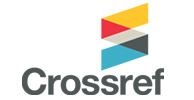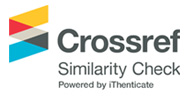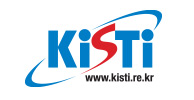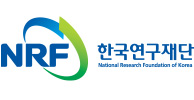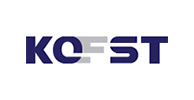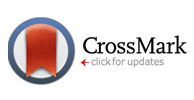Ethical Guidelines
Submission Guidelines
Purpose and period of publication
1.The Journal of the Earthquake Engineering Society of Korea (JEESK), the official journal of the Earthquake Engineering Society of Korea (hereinafter referred to as the Society), publishes creative research conducted in the fields of earthquake engineering theory, development, and application. Other related papers can be published according to the decision of the editorial committee.
2. The J Earthquake Engineering Society of Korea is published six times a year on the first day of every other month (January, March, May, July, September, and November).
(However, until the December 2012 issue, it is published on the last day of even-numbered months.)
Ethics Guidelines
The Society is an academic organization whose purpose is to contribute to the national well-being and the improvement of the people's welfare by promoting and disseminating academic studies and earthquake disaster prevention measures and technologies in the overall field of earthquakes and earthquake engineering. Therefore, the publication of a collection of papers particularly presenting academic research results and practical results contributes to academic and industrial development in the field of earthquake engineering.
This research ethics regulation (hereinafter referred to as the ethics regulations) concerns the ethical principles and standards that society members (hereinafter referred to as members) must adhere to in the process of performing these roles.
1. Indication of citations and references
1) When quoting publicly available academic materials, efforts must be made to describe them
accurately, and the source must be clearly disclosed unless the material is common knowledge. In
the case of data obtained through the evaluation of a thesis or research plan or through
personal contact, these may be cited only after obtaining consent from the researcher who provided
the information.
2) When quoting someone else’s writing or borrowing (referring to) an idea, the citation or reference should be indicated through a footnote (endnote). This notation should be separately specified so that the readers can understand the results of previous research and the interpretation of authors’ thoughts and claims.
2. Publishing achievement
1) Authors are responsible only for the research they conducted or contributed to as authors and are recognized as achievements.
2) The order of authors (translators) or authors of papers or other published achievements must
accurately reflect the degree of contribution to research, regardless of relative status. Becoming
an author or receiving recognition for achievements as a first author simply because one holds
a certain position cannot be justified. On the other hand, for indirect help in research or writing (translation), gratitude should be expressed appropriately in an acknowledgment.
3. Revision of the paper
Authors must try to accept as much as possible the opinions of the editors and examiners presented during the paper evaluation process and reflect them in the paper. If authors do not agree with their opinions, authors must write down the grounds and reasons in detail and inform the editorial members (committee).
4. Prohibition of plagiarism
Authors must not present research or claims that they have not conducted in papers or writings as
if they were their own research results or claims. Authors can refer to other people's research
results several times while citing the source, but presenting part of them as your own research
results or claims is plagiarism.
5. The authors, under prohibition on duplicate publication or double publication of research work must not submit or attempt to publish their previously published research work (including research scheduled for publication or under review) as if it were new research work, regardless of whether it is domestic or foreign. If authors wish to publish using research that has already been published in an academic journal, authors must provide information about previous publications to the editor of the journal that authors wish to publish and check for duplicate or double publication. In addition, in case the doctoral or master's thesis or part thereof is submitted as it is or after modifying or supplementing, the author of the thesis must be included as an author.
Submission
1. At least one of the authors of the paper must be a member of this society and any researcher throughout the world can submit a manuscript if the scope of the manuscript is appropriate. (Author qualifications)
2. Manuscripts must comply with these submission guidelines to be accepted.
3. Manuscripts are submitted using the online paper submission system.
1) Go to http://submission.eesk-j.or.kr (society paper submission website) and submit a paper.
2) If there are any questions about using the system, please contact the society office by phone, fax, or e-mail.
3) Only for papers that are confirmed to be published, a consent form for copyright transfer and a declaration of interest must be submitted to the society.
Preparation of the manuscript
1. The manuscript should be written in Korean or English.
2. The length of the paper must be less than ten printed pages, including diagrams and photos, and for longer lengths, the author must pay KRW 30,000 per page. Even in this case, it cannot exceed 14 pages in total.
3. The manuscript should be written using a word processor, referring to the paper format sample on the society's website.
4. In principle, papers are written in the following order: Korean title, author's name, Korean author's affiliation and position, English title, author's English name, English author's affiliation and position, English summary, English keywords, main text, acknowledgments, symbology, references, and appendix.
5. The title of the paper should express the content of the paper simply and clearly. In the case of Korean papers, the English title must be specified in addition to the Korean title. If the title has more than 50 characters including spaces, a simple title of 50 characters or less must be additionally written.
6. The author's name is located below the paper title. In the case of English names, they are written in the order of last name and first name. The author's name for correspondence and email address are written in a footnote at the bottom of the first page.
7. The English summary is written in a paragraph that clearly expresses the research purpose,
content, and results. The length should be less than 200 words. More than 3 and
less than 6 English keywords that are the core of the paper should be selected and indicated below the summary.
8. Formulas and various symbols used in the text must use common sense symbols. Formulas with formula numbers are written on a separate line along with the formula number.
9. In principle, all units follow the SI unit system. When using other unit systems, the SI unit system must be specified in parentheses. In principle, all tables, figures and photos should be written on separate sheets.
10. When citing a reference in the main text, the reference number in alphabetical order should be written in parentheses [ ] to the right of the main text.
11. When mentioning a reference in the text, one reference is written as [1], two references [1, 2], three or more consecutive references [2-5], and three or more discontinuous references are written as [1], [3], [5]. When listing a reference at the end of a sentence, it should be written before the full stop such as “∼did [1].” When written in the middle of a sentence, it is written before a comma (e.g., “like ~ [1],”).
12. When mentioning the names of authors of the reference in the text, the format Hong Gil-dong and Lee Seong-gye [1] should be written in Korean, Hong Gil-dong et al. [1] in case of English. If there are three or more authors, it should be mentioned like Hong et al. [1].
13. References are organized in the order of citation in the main text and the following format are followed.
1) References should be written in English. References in Korean papers must also be written in English.
2) Reference writing follows the NLM (National Library of Medicine) method.
3) References should be listed in ascending numerical order at the end of the paper.
4) The month of the publication date is abbreviated by only the first three letters (e.g., Mar, Sep).
5) The title of the journal is abbreviated. Books are not abbreviated.
6) References should be written in informal format (No italic, No bold, No underline).
7) In references, all people's names are written in the order of last name and initial abbreviation (e.g., Jang, YS, Ellingwood, BR).
8) The writing format according to the type/format of the reference is as follows.
☞Example
∙ Periodical journal paper (general case)
1. Meneton P, Jeunemaitre X, de Wardener HE, MacGregor GA. Links between dietary salt intake, renal salt handling, blood pressure, and cardiovascular diseases. Physiol Rev. 2005 Apr;85(2):679-715.
2. Jun BC, Song SW, Park CS, Lee DH, Cho KJ, Cho JH. The analysis of maxillary sinus aeration according to aging process: volume assessment by 3-dimensional reconstruction by high-resolutional CT scanning. Otolaryngol Head Neck Surg. 2005 Mar;132(3):429-34.
∙Periodical journal without author
1. Drug-resistance tuberculosis among the foreign-born in Canada. Can Commun Dis Rep. 2005 Feb 15;31(4):46-52. English, French.
∙ Part of the periodical journal
1. Butany J, Carmichael K, Leong SW, Collins MJ. Coronary artery stents: identification and evaluation. J Clin Pathol. 2005 Aug;58(8):795-804. Table 3, Common stent complications; p.796.
∙ Online academic journals
1. Kaul S, Diamond GA. Good enough: a primer on the analysis and interpretation of non-inferiority trials. Ann Intern Med [Internet]. 2006 Jul 4 [cited 2007 Jan 4];145(1):62-9. Available from: http://www.annals.org/cgi/reprint/145/1/62.pdf
2. Happell B. The influence of education on the career preferences of undergraduate nursing students. Aust Electron J Nurs Educ [Internet]. 2002 Apr [cited 2007 Jan 8];8(1):[about 12 p.]. Available from:
http://www.scu.edu.au/schools/nhcp/aejne/vol8-1/refereed/happell_max.html
3. Prabhu V. Sutton C. Creativity and certain personality personality traits: Understanding the mediating effect of intrinsic motivation. Creativity Research Journal [Internet]. 2002 Apr [cited 2007 Jan 8];20(1):66-77. DOI:10.1080/10400410701841955.
∙ Newspapers
1. Gaul G. When geography influences treatment options. Washington Post (Maryland Ed.). 2005 Jul 24:Sect. A:12(col.1).
∙Conference Proceedings
1. Dostrovsky JO, Carr DB, Koltenburg M, editors. Proceedings of the 10th World Congress on Pain; 2002 Aug 17-22; San Diego, CA. Seattle: IASP Press;c2003.
∙Writings
1. Eyre HJ, Lange DP, Morris LB. Informed decisions: the complete book of cancer diagnosis, treatment, and recovery. 2nd ed. Atlanta: American Cancer Society; c2002. 768 p.
∙ Writings without authors
1. HIV/AIDs resources: a nationwide directory. 10th ed. Longmont (CO): Guides for Living; c2004. 792 p.
∙ Part of the writing
1. Speroff L, Fritz MA. Clinical gynecologic endocrinology and infertility. 7th ed. Philadelphia: Lippincott Williams&Wilkins; c2005. Chapter 29, Endometriosis; p. 1103-33.
∙ Online resources (homepage)
1. Hooper JF. Psychiatry &the Law: Forensic Psychiatric Resources Page [Internet]. Tuscaloosa (AL): University of Alabama, Department of Psychiatry and Neurology;1999 Jan 1 [updated 2006 Jul 8; cited 2007 Feb 23]. Available from:
http://bama.ua.edu/~jhooper/.
∙ Part of the online resources (webpage)
1. AMA: helping doctors help patients [Internet]. Chicago: American Medical Association; c1995-2007. AMA launches exclusive partnership with the Reach MD Channel for medical professionals; 2007 Mar 26 [cited 2007 Mar 28]; [about 2 screens]. Available from:
http://www.ama-assn.org/ama/pub/category/17469.html
∙ Part of the online resources (webpage)
1. Backus, Joyce. Physician Internet search behavior: detailed study [Internet]. Message to: Karen Patrias. 2007 Mar 27 [cited 2007 Mar 28]. [2 paragraphs]. http://www.ama-assn.org/ama/pub/category/17469.html
∙ Wikis
1. The RHIO Wiki [Internet]. Washington: Center for health Transformation. 2006 Aug 21 - [cited 2007 May 5]. Available from: http://www.socialtext.net/rhiowiki/index.cgi
14. Materials that supplement the content of the main text or detailed explanations on the derivation process of formulas may be included in the appendix when necessary. When using an appendix, a mention of it is required in the main text and should be written next to the references.
15. Other details follow the academic paper writing guidelines of this society.
(https://www.eesk.or.kr/staticdata/static/contribution/Submit-rule/)
Peer review process
1. The manuscript of the paper is examined by three examiners.
2. The manuscript is examined by the editorial committee after examination by experts. The editor requests re-editing because the revisions to the examiner’s points are insufficient, additional revisions are necessary, or the submission does not comply with the submission regulations. Afterwards, the editor-in-chief makes the final decision on whether to publish the paper.
3. According to the results of the examination, the author must make corrections and supplements, and submit the revised copy and record of corrections and supplements to the online paper submission system within two weeks. Corrections made according to the examiner's comments must be described by item and the revised parts must be indicated in the manuscript.
4. The author must bear publication fees, special typesetting fees (if necessary), and additional
book costs. The publication fee is paid upon confirmation of
publication and is KRW 100,000 per article. In case of urgent examination, a publication fee of
KRW 100,000 and an examination fee of KRW 300,000 per article must be paid.
5. Details of paper review follow separate review regulations.
Ethical Guideline for Reviewers
1. Objectives
The objectives of this guideline are to set standards for reviewing manuscripts such as research papers, discussions about examination, and discussion responses submitted to the journal of Earthquake Engineering Society of Korea (hereinafter referred to as our society) (hereinafter referred to as the journal) to determine whether they are appropriate for publication in the journal.
2. Field of examination
2.1 Examination of research manuscripts is conducted in the field desired by the author among the fields stipulated by our society.
2.2 If the content of the submitted manuscript does not match the specialized field desired by the author, the field may be modified after review by the editorial committee.
2.3 The submitted paper will be rejected if two or more examiners judge that it does not match with the nature of our society's journal.
3. Examiners
3.1 Research papers
Research papers are examined by three specialized members within the examination field. However, an exception is allowed in the case of 7.2.
3.2 Discussion and responses to the discussion
Discussion and its response are reviewed by one of the examiners for the original paper.
3.3 Appointment
Examiners are appointed by the editorial committee of the submitted paper. However, if the
appointed examiner determines that the examination is impossible, it must be returned immediately.
3.4 Urgent review (Additional)
Papers submitted urgently are examined by three examiners who are approved by the editorial committee and deemed eligible.
4. Detail of the examination
The examiners objectively examine whether the research paper is at an appropriate level in the relevant field considering the originality, validity, completeness, and usability as follows.
4.1 Originality
The manuscript is reviewed to determine whether it satisfies one or more of the following
requirements and whether it has not already been published or known fact.
①Original in topic, content, and method.
②Raising prominent issues in academia and society.
③Making a significant contribution to the explanation of a phenomenon.
④Presenting valuable technical review and experience in planning, design, and construction with great creativity.
⑤Comprehensively organizing timely topics and presenting new perspectives.
4.2 Validity
The manuscript content is examined to ensure that there are no errors and that it has reliability and feasibility by referring to the following points:
①Was all important literature cited and fair evaluation made?
②Was an appropriate conclusion reached by comparing and evaluating existing technology and research results?
③Are the conditions of experiment and analysis clearly described?
4.3 Completeness
The manuscript is examined to determine whether it is described accurately and concisely in accordance with the guidelines for paper submission and writing. In particular, the following points should be focused:
①Adequacy of the overall configuration.
②Clarity of the objectives and results.
③Relevance with existing research and technology.
④Appropriateness of sentence expression.
⑤Clarity and appropriateness of diagrams.
4.4 Usability
The content is examined to have academic or practical value and whether it satisfies one or more of the following:
①Are the topic and content timely?
②Is the applicability, usefulness, and development of research and technological results high?
③Are research and technological achievements worth using in practice?
④Does it systematize research in the field and present prospects for the future?
5. Judgment of examination
The examiner evaluates the level by referring to the review contents according to Article 4 and the research papers published in the journal to date, and makes the decision as follows:
5.1 Published as written
Cases where the content of the manuscript may be published as it is without modification.
5.2 Published after revision
(Phrasing) If there are typos or contexts that need to be corrected in the manuscript.
(Contents) If the revisions are minor and it is judged possible to publish without reexamination after revision.
5.3 Reexamination after revision
If it is judged that the revisions are important, or the manuscript needs to be significantly supplemented. However, reexamination after revision is possible only twice.
5.4 Unacceptable for publication
①A paper that plagiarized the contents of an already published paper without any basis
②Papers with errors or unclear research results
③Papers whose research results are not significantly different from those already published
④Papers without originality in research content
⑤Papers with inappropriate narrative or logical systems
5.5 Judgement of urgent examination (Addition)
①In the case of urgent review, to facilitate the examination process, the submitter may recommend up to 5 examiners who can fairly examine the paper at the time of paper submission.
②In case of urgent examination, it is judged as ‘acceptable for publication (publishing after revision)’ and ‘not acceptable for publication.’
6. Deadline for examination
In principle, the examiner responds with the examination results within three weeks of the date
of the examination request. However, an urgent examination shall be conducted within ten days
of the date of request.
7. Processing of the examination result
7.1 Publication
The following research papers are published in the journal.
①If two or more examiners determine publication during the initial examination.
②When two or more examiners decide that a manuscript revised by the submitter is worthy of publication after reexamination.
7.2 Reexamination
The following research papers are requested to be reexamined by two examiners.
①When two or more examiners determine that a reexamination is required after revision.
②If the judgment for publication has not been made by two or more examiners and there is a request for reexamination.
7.3 Return the submitted paper
In the following cases, the paper will be returned as unacceptable for publication.
①If two or more of the three examiners decide that the article cannot be published during the initial examination.
②When two or more examiners decide that a manuscript revised by the submitter cannot be published after reexamination.
8. Submission of revised manuscript and response
8.1 Revised manuscript
When deciding whether to publish the paper after revision or to require reexamination after revision, the submitter must submit a revised manuscript that reflects the examination results.
8.2 Response
A response to the examiner who has decided to reexamine or not publish after revision must be submitted regardless of whether the paper has been reexamined.
8.3 Revision deadline
A submitter must submit a revised version and response within 6 months of being notified of the examination results.
Additionally, if the submitter does not submit a revised paper within one year after being notified of the review results, the editorial committee will cancel the examination of the paper.
(However, this section applies to papers submitted after May 27, 2009.)
8.4 Conditions for decision unacceptable
If the submitter does not submit revised paper to the editorial committee within 6 months from the date of notification of the examination results (except in cases where the submitter requests an extension of the deadline in writing within this period and the request is reviewed by the editorial committee).
9. Raising objection to examination results
If a submitter has an objection to the examination decision, he or she may file an objection in writing to the editorial committee. The editor-in-chief reviews objections received in writing, discusses them at the editorial committee before processing.
10. Miscellaneous
①Matters not specified above will be managed through resolution by the editorial committee.
②Opinions are to be collected and reflected to improve the paper examination method through regular editorial committee meetings and our society's website.
Guidelines on the Research Ethics of Earthquake Engineering Society of Korea
This research ethics regulation (hereinafter referred to as the ethics regulation) concern the ethical principles and standards that members of our society (hereinafter referred to as members) must adhere to in the process of performing these roles.
Chapter 1 Research-related ethics regulation
Section 1 Ethics regulation to be observed by authors
Article 1 Indication of citations and references
(1) When citing publicly available academic materials, efforts must be made to describe them accurately, and the source must be clearly disclosed unless the material is common knowledge. In the case of data obtained through evaluation of a thesis or research plan or through personal contact, it may be cited only after obtaining consent from the researcher who provided the information.
(2) When quoting someone else's writing or borrowing (referring to) an idea, it must be indicated through a footnote (endnote) whether it is quoted or referred to. Through these notations, the results of previous research and author’s original thoughts, claims, and the interpretation must be separated and specified so that the reader can find out.
Article 2 Publishing achievements
(1) Authors are responsible only for the research they conducted or contributed to and are recognized for their achievements.
(2) The order of authors (translators) or authors of papers or other published achievements must accurately reflect the degree of contribution to research, regardless of their relative status. Simply being in a certain position does not justify becoming an author or being recognized for achievements as a first author. On the other hand, for indirect help in research or writing (translation), gratitude can be expressed appropriately in an acknowledgment.
Article 3 Revision of paper
Authors must try to accept the opinions of the editors and examiners
presented during the paper examination process and reflect them in the paper as
much as possible. If authors do not agree with their opinions, they must write down the grounds and reasons in detail and inform the editorial committee members (committee).
Article 4: Prohibition of plagiarism
Authors must not present research or claims that they have not conducted in papers, writings as if they were their own research results or claims. Others’ research results can be referred to several times while citing the source, but presenting part of them as author’s own research results or claims is regarded as plagiarism.
Article 5 Prohibition of duplicate publication or double publication of research results
Authors must not submit or attempt to publish their previously published research (including research scheduled for publication or under examination) as if it is new research, regardless of whether it is domestic or foreign. If it is desired to publish using research that has already been published in an academic journal, information about previous publications must be given to the editor of the journal author wishes to publish and duplicate or double publication should be checked. Additionally, when submitting a doctoral or master's thesis or part of it as it is or with modifications or supplements, the author of the thesis must be included as an author.
Article 6 Authors
Authorship credit should be based on 1) substantial contributions to the conception or design of the work; or the acquisition, analysis, or interpretation of data for the work; and 2) drafting the work or revising it critically for important intellectual content; and 3) final approval of the version to be published; and 4) agreement to be accountable for all aspects of the work in ensuring that questions related to the accuracy or integrity of any part of the work are appropriately investigated and resolved. The author should fall under the above four conditions. The Journal of Earthquake Engineering Society of Korea does not allow changes/additions/deletions of the author after submission of paper. Only in rare cases, such as work that is changed in response to examiner’s comments, should the addition or removal of authors be considered after submission.
Section 2 Ethics regulation to be observed by editorial members
Article 1 Editorial committee members must treat papers submitted for publication in an academic journal fairly, based solely on the quality of the paper and the submission regulation, regardless of the author's gender, age, or affiliated institution, as well as any preconceptions or personal relationships.
Article 2 The editorial committee must request the examination of submitted papers from examiners with professional knowledge in the relevant field and the ability to make fair judgments. When requesting the examination, it is to ensure that the examination is as objective as possible by avoiding examiners who are overly friendly with the author or who are overly hostile. However, if the examination results of the same paper differ significantly between examiners, advice may be sought from a third expert in the same field.
Article 3 Editorial members must not disclose information about the author or the content of the paper to anyone other than the examiners until the publication of the submitted paper is decided.
Section 3 Ethics regulation to be observed by the examiners
Article 1 Examiners must faithfully examine the papers requested by the journal's editorial committee (society) within the period specified in the regulation for examination and notify the editorial committee (society) of the examination results. If the examiner determines that he is not the right person to examine the content of the paper, he should notify the editorial committee (board) of the fact without delay.
Article 2 Examiners must fairly examine the papers based on objective criteria, regardless of their personal academic beliefs or personal relationship with the author. Papers should not be rejected without specifying sufficient grounds, or papers should not be rejected on the grounds that they conflict with the reviewer's own viewpoint or interpretation, and the papers should not be examined without thoroughly reading them.
Article 3 Examiner must respect the personality and independence of the author as a professional intellectual. In the examination opinion, examiner’s judgment about the paper should be disclosed and the reasons for any parts that examiner believes improvement is needed should be explained in detail. Polite and gentle expressions should be used as much as possible, and expressions that are derogatory or insulting to the author should be avoided.
Article 4 Examiners must keep the confidentiality of the papers being examined. Unless advice for examining paper is specially sought, paper should not be shown to others, or the contents of paper should not be discussed with others. Additionally, the contents of the paper must not be cited without the consent of the author before publication in the journal.
Chapter 2 Enforcement guidelines of ethics regulation
Section 1 Ethics regulation to be observed by authors
Article 1 Pledge and education of ethics regulation
Members of our society must pledge to comply with the ethics regulation. Our society provides education on ethics regulation to authors, editors, examiners, and all members.
Article 2 Reporting violation of ethics regulation
If a member becomes aware that another member has violated the ethics regulation, he or she must try to correct the problem by reminding the member of the ethics regulation. However, if the problem is not corrected or if a clear violation of the ethics regulation is revealed, it can be reported to the ethics committee of our society. The ethics committee must not disclose to the outside world the identity of the member who reported the issues to our society.
Article 3 Organization and term of ethics members committee
The ethics committee consists of five or more members and is appointed by the chairperson upon recommendation of the Board of Directors. The term of office of the ethics committee members is two years.
Article 4 Authority of ethics committee
The ethics committee conducts a comprehensive investigation into matters reported as violations of the ethics regulation through informants, persons under investigation, witnesses, references, and evidence, and if it is determined that a violation of the ethics regulation is true, it recommends appropriate sanctions to the chairperson.
Article 5 Investigation and review of ethics committee
Members who are reported to have violated the ethics regulation must cooperate with the investigation conducted by the ethics committee. Failure to cooperate with this investigation is itself a violation of the ethics regulation.
Article 6 Guarantee of opportunity for explanation
Members who are reported to have violated the ethics regulation must be given sufficient opportunity to explain themselves.
Article 7 Confidentiality for persons subject to investigation
Ethics committee members must not disclose the member's identity to the outside until our society's final disciplinary decision is made for violation of the ethics regulation.
Article 8 Procedure and content of disciplinary action
If there is a recommendation for disciplinary action from the ethics committee, the chairperson convenes a board meeting to make the final decision on whether to discipline and the details of the disciplinary action. Members who are determined to have violated the ethics regulation will be notified in writing of the decision and may be subject to disciplinary action such as cancellation of publication, deletion of the paper from the online database, warning, suspension or deprivation of membership, and disclosure on the society's website. These measures may be disclosed to other organizations or individuals.
Article 9 Revision of ethics regulation
The revision procedure for the ethics regulation follows the revision procedure for the bylaws of our society. If the ethics regulation is revised, members who have pledged to comply with the existing regulation will be deemed to have pledged to comply with the new regulation without any additional pledge.
Supplementary provision
This regulation comes into effect from April 4, 2008.
※This regulation was prepared with reference to the research ethics regulation of Korean Association of Ethics, the Publication ethics regulation of Architectural Institute of Korea, and Directive No. 236, Guidelines for Securing Research Ethics of the Ministry of Science and ICT.
Process for Identification of and Dealing with Allegations of Research Misconduct
When the journal faces suspected cases of research and publication misconduct such as redundant (duplicate) publication, plagiarism, fraudulent or fabricated data, changes in authorship, an undisclosed conflict of interest, ethical problems with a submitted manuscript, a reviewer who has appropriated an author’s idea or data, complaints against editors, and so on, the resolution process will follow the flowchart provided by the Committee on Publication Ethics (COPE) according to COPE’s guideline (http://publicationethics.org/resources/flowcharts). The discussion and decision on the suspected cases are carried out by the Editorial Board. The journal adheres to the ethical guidelines for research and publication described in Guidelines on Good Publication (http://publicationethics.org/resources/guidelines) and the JEESK Guidelines (http://www.eesk-j.or.kr).
Authorship and Contributorship
Authorship credit should be based on 1) substantial contributions to conception and design, acquisition of data, and/or analysis and interpretation of data; 2) drafting the article or revising it critically for important intellectual content; 3) final approval of the version to be published; and 4) agreement to be accountable for all aspects of the work in ensuring that questions related to the accuracy or integrity of any part of the work are appropriately investigated and resolved. Every author should meet all of these four conditions. After the initial submission of a manuscript, any changes whatsoever in authorship (adding author(s), deleting author(s), or re-arranging the order of authors) must be explained by a letter to the editor from the authors concerned. This letter must be signed by all authors of the paper. Copyright assignment must also be completed by every author.
- Corresponding author and first author: JEESK does not allow multiple corresponding authors for one article. Only one author should correspond with the editorial office and readers for one article. JEESK does accept notice of equal contribution for the first author when the study was clearly performed by co-first authors.
- Correction of authorship after publication: JEESK does not correct authorship after publication unless a mistake has been made by the editorial staff. Authorship may be changed before publication but after submission when an authorship correction is requested by all of the authors involved with the manuscript.
Complaints and Appeal
JEESK deals with complaints and appeals in accordance with the recommendations of the COPE : https://publicationethics.org/appeals. Authors who wish to request reconsideration of a rejected manuscript can do so by emailing the journal’s Editorial Office (eesk1@eesk.or.kr) including the manuscript ID number. Please note that reconsideration will be conducted only at the discretion of the Editor(s). Please be advised that, due to keen competition for space in our journals, manuscripts may be considered low priority and subsequently rejected. Authors should explain in detail the reasons why they believe their manuscript should be reconsidered. If it is determined that it should be reconsidered, then the author may be asked to submit it as a new manuscript. The manuscript will then receive a new identification number and submission date and undergo review as a new submission.
Conflict of Interest
The corresponding author must inform the editor of any potential conflicts of interest that could influence the authors’ interpretation of the data. Examples of potential conflicts of interest are financial support from or connections to companies, political pressure from interest groups, and academically related issues. In particular, all sources of funding applicable to the study should be explicitly stated.
Data sharing and Reproductibility
Authors are encouraged to make all data that is generated by their research, and that is drawn upon in their article, available at the earliest opportunity, wherever legally and ethically possible.
Ethical Oversight
JEESK follows the COPE definition of ethical oversight; ethical oversight should include, but is not limited to, policies on consent to publication, publication on vulnerable populations, ethical conduct of research using animals, ethical conduct of research using human subjects, handling confidential data and ethical business/marketing practices.
Intellectual Property
JEESK recognizes the importance of intellectual property rights in research and publication. This Intellectual Property Policy outlines the principles and guidelines regarding the protection and use of intellectual property in articles published in JEESK. Authors are responsible for ensuring that their research and manuscript comply with intellectual property laws and regulations. Any concerns or disputes related to intellectual property should be reported to the JEESK editorial office for appropriate action.
Post-publication discussion
Comment and reply (letters to the editor) may be in response to a published article, or a short, free-standing piece expressing an opinion.
Copyright Policy
All published papers will become the permanent property of the Earthquake Engineering Society of Korea and must not be published elsewhere without written permission from the Society. A copyright transfer agreement form should be submitted electronically on the submission website. This form is identical to the Creative Commons (Attribution-Noncommercial) at: https://creativecommons.org/licenses/by-nc/4.0/.
Licensing Information (Policy)
JEESK is an open access journal distributed under the terms of the Creative Commons Attribution Non-commercial license, which permits unrestricted use, distribution, and reproduction in any medium, provided the original work is properly cited for non-commercial purposes.
Creativity Commons
JEESK is distributed under the terms of the Creative Commons Attribution License (https://creativecommons.org/licenses/by/4.0/), which permits unrestricted, distribution, and reproduction in any medium, provided the original work is properly cited.
Policies on posting accepted articles with third parties (Deposit Policy)
According to the deposit (self-archiving) policy of Sherpa/Romeo (http://www.sherpa.ac.uk/), authors cannot archive a pre-print, but they can archive a post-print (i.e. final draft after publication). Authors can archive the publisher's version/PDF.
Archiving
It is accessible without barrier from JEESK website, Korea Citation Index (https://www.kci.go.kr), or National Library of Korea (http://nl.go.kr) in the event a journal is no longer published.
Revenue Souces
Revenue sources of journal were from the support of publisher (The Earthquake Engineering Society of Korea) and Korea Government’s support.
Direct Marketing
Full-text PDF files are also available at the official website (http://www.eesk-j.or.kr/). To order a subscription to Journal of the Earthquake Engineering Society of Korea , please contact our editorial office. The Earthquake Engineering Society of Korea will send the journal to member institutions freely and to member individuals with the annual subscription fee of 50,000 Korean Won.
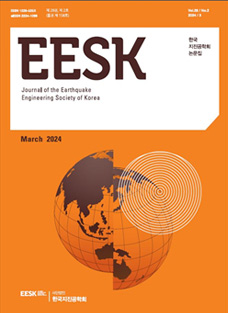
Frequency Bimonthly
Doi Prefix 10.5000/EESK
Year of Launching 1997
Publisher Earthquake Engineering Society of Korea



Online Submission
submission.eesk-j.or.kr
EESK
Earthquake Engineering Society of Korea

